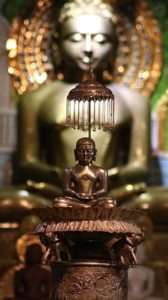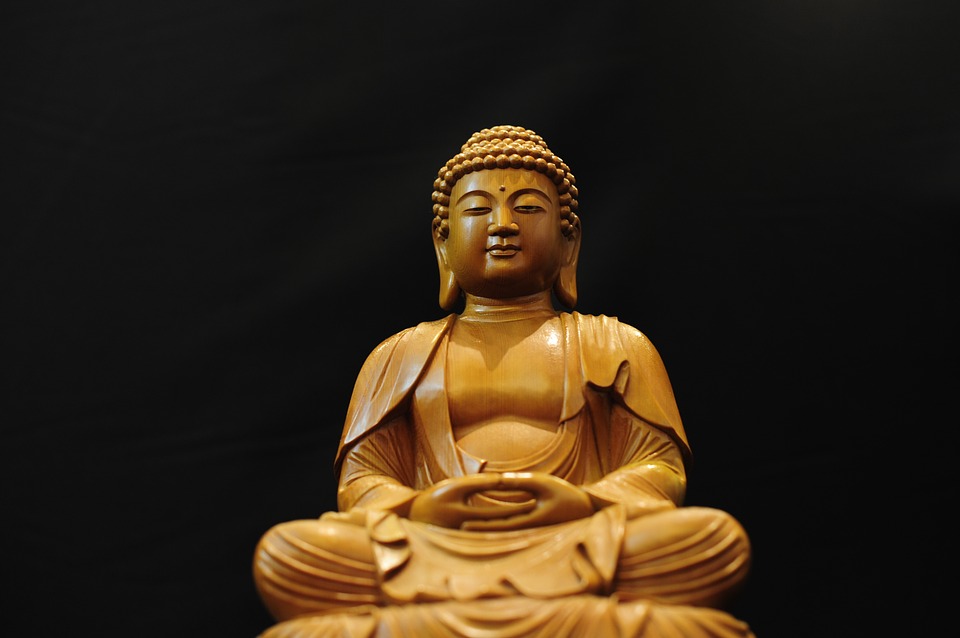Like anything else, in order to understand Buddhism, we must first understand it’s rooted. As to understand how modern Buddhism began, we will first travel back in time to view the various schools of thought that planted the seeds for the modern Buddhists to live and grow upon. We will touch on where it all began and carry onto the emergence of what we now refer to as the coming of the Sidhartha Buddha.
The Beginning of Buddhism in India
Just as in Christianity, which all started in Nazareth, and carried into Jerusalem, Buddhism began in India. During the beginning, there were three major Indian schools of thought that gave way to our modern religion- the Vedic religion; the Sramanic movement; and of course Jainism, all of which began in separate parts of the country and eventually met to conceive modern Buddhism.
The Vedic religion was a philosophical movement based on the Vedas, the sacred books of the Vedic religion. This religion, though practiced by the Aryans, quickly found its way into societies all around the world and led to the development of some of the earliest caste systems. Unlike most religions, the Vedic religion was not static, it grew and blossomed with time into a religion called Brahmanism. This religion was ultimately geared toward answering questions pertaining to the creation of the world, reality, and other topics more existential in nature. Brahmanism was a sacrificial religion used to serve the Hindu gods, which influenced Buddhism in that it pushed the modern movement away from all of that.
The Sramanic movement
The Sramanic movement (or Sramana movement) was more or less a branch off of Brahmanism. Where sacrifice was viewed as a literal way of pleasing the gods in Brahmanism, it was viewed more symbolically in the Sramana movement. Thusly, the sacrifices of the Sramana movement were more geared toward the progression of the individual (symbolically). The most important focuses of belief in this school of thought, perhaps, was the concept of the Atman, and the Brahman. The Atman was, in essence, the purest, most static, and immortal spirit in existence, the universe. The Brahman was the spiritual force that gave birth to the universe and sustained it.
 Once this concept was established, the idea of reincarnation and the karma theory were introduced. The Sramanas believed that there was a piece of Atman living within them (their soul, so to speak). This got them to thinking about death entirely differently. Now they wondered if one could possibly return themselves to this spiritual state of the Atman so as to make themselves “immortal”. It was then that the karma theory was introduced, suggesting that your actions, as well as spiritual well being, were directly related with some sort of a past life, and more importantly, some sort of afterlife. The ultimate goal now was to not lead a life so bad as to be reincarnated into something terrible like a rock or your little brother’s sneaker (lol), but to reunite themselves with this perfect universal force and thusly become immortal.
Once this concept was established, the idea of reincarnation and the karma theory were introduced. The Sramanas believed that there was a piece of Atman living within them (their soul, so to speak). This got them to thinking about death entirely differently. Now they wondered if one could possibly return themselves to this spiritual state of the Atman so as to make themselves “immortal”. It was then that the karma theory was introduced, suggesting that your actions, as well as spiritual well being, were directly related with some sort of a past life, and more importantly, some sort of afterlife. The ultimate goal now was to not lead a life so bad as to be reincarnated into something terrible like a rock or your little brother’s sneaker (lol), but to reunite themselves with this perfect universal force and thusly become immortal.
Moving onto the Jains, we can now establish a clear founder to this following, a man by the name of Mahavira. He was a man that had a family and a son, but became so tortured by the idea of bad reincarnation that he abandoned everything to escape it. Mahavira, the original ascetic was believed to have attained what we now refer to as enlightenment and was free of the universal cycle of things. Mahavira then developed not only a following, but a means to attain this state of enlightenment. He called this system idea ahimsa, nonviolence. Ahimsa sprang from their understanding of karma in the basic sense that what you do now will affect you now, as well as in future lives. This following took it to an extreme however and made the deduction that any violence, even the unintentional murder of a small insect, had profound effects on the eventuality of your soul. These are the types we hear about that carry a broom with them to sweep the ground before their feet, so as to avoid any such incident.
Modern Buddhist thought
There was once a ruler of the north-eastern portion of India in the city of Nepal named Suddhodana. He had a son named Siddhartha born miraculously from his mother (without the touch of a man). He lived a wealthy life until he reached manhood and decided to go into the city to see the people. It was here that he first witnessed old age and death. He then encountered a man with whom he was impressed for what he had said about having escaped the evils of the world. It was then that he left his life of wealth and royalty behind forever. He became an ascetic just as Mahavira did and studied under two great meditation teachers of the time.
 The development of the Buddha (Siddhartha) then became based upon three major conclusions about previous thought as to how to attain enlightenment, all achieved in meditation none the less. The first of which would be the realization that the ascetic life didn’t work. After this, he decided to meditate under a tree until he either attained enlightenment or died. He then attained enlightenment. He was no longer Siddhartha, but the Buddha. Though he had attained Nirvana (the goal of Buddhism) Buddha decided to stay on this earth out of pity for doomed humanity.
The development of the Buddha (Siddhartha) then became based upon three major conclusions about previous thought as to how to attain enlightenment, all achieved in meditation none the less. The first of which would be the realization that the ascetic life didn’t work. After this, he decided to meditate under a tree until he either attained enlightenment or died. He then attained enlightenment. He was no longer Siddhartha, but the Buddha. Though he had attained Nirvana (the goal of Buddhism) Buddha decided to stay on this earth out of pity for doomed humanity.
Buddha developed a following to carry on his teachings. He devised for them a code of rules called the Vinaya. His lectures were known as Sutras. Then there were the philosophical texts called the Abhidharma. These three texts, the Tripitaka, became the scripture that made up early Buddhism.
As to later understandings about the existence of man and the universe, one would dabble into the three marks of existence (impermanence, suffering, and the idea that nothing existed independent of previous causes), the four noble truths (life is unsatisfactory; this is because we thirst to be freed of our ignorance of the nature of reality; there is a way out of it; it lies in the Eightfold Path) and the Eightfold path (right viewpoint; right intention, right speech, right action, right livelihood, right effort, right mindfulness, and right concentration).
As of now, there are two main schools of Buddhist thought today. There is one that focuses on the karma theory and the afterlife, Tibetan Buddhism, and the other secular studies of Buddhisms. These are viewed more as philosophical methods of thought than religion.
https://www.youtube.com/watch?v=qvC0klpk8nY





